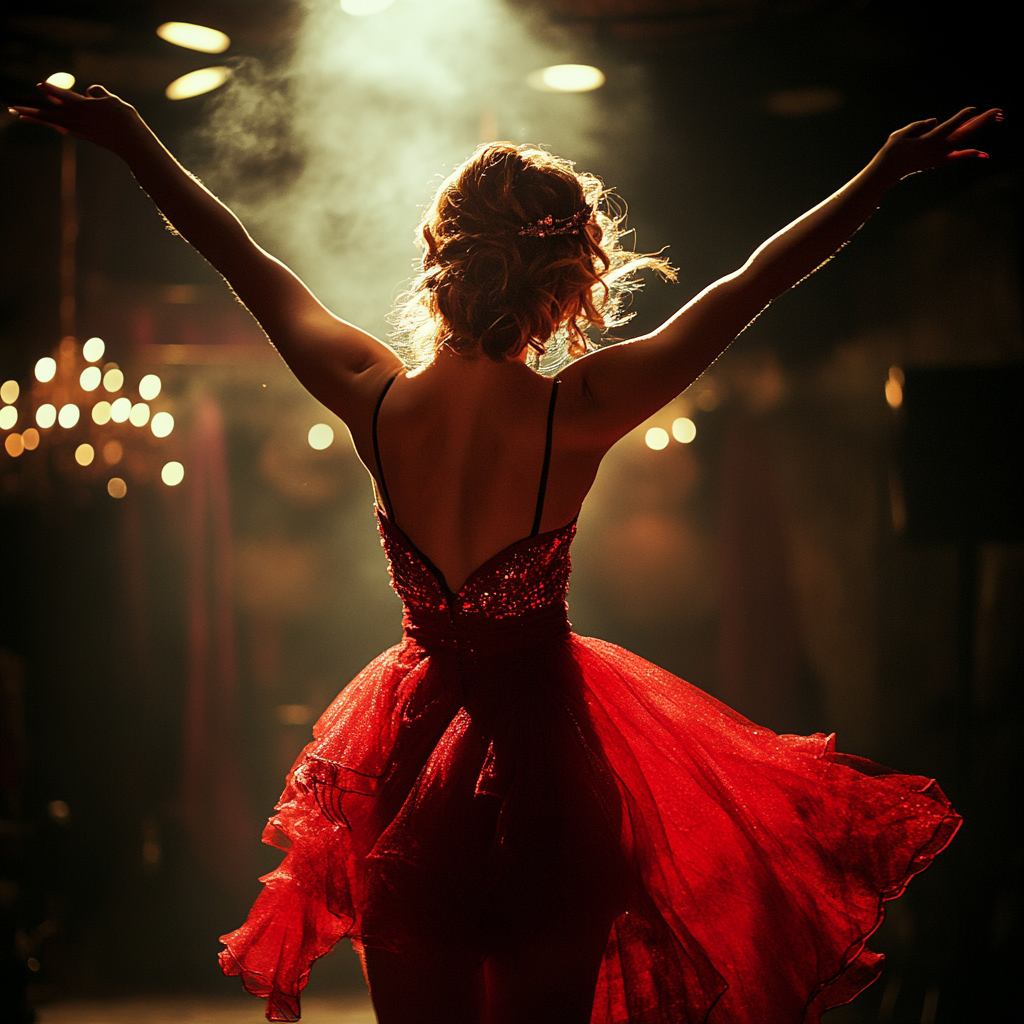Cabaret has always attracted the attention of spectators with its bright, passionate and spectacular dance numbers. Every movement on stage reflected emotion, energy and drama, creating an atmosphere that was captivating and captivating. Cabaret dancing is not just an entertaining element, it has become an important part of the cultural and artistic heritage of the genre.
Cancan: Energy and courage on stage
Cancan is one of the most recognizable and popular dances in the history of cabaret. It originated in France in the 19th century and quickly won the hearts of the public with its incredible energy and courage. This dance was characterized by fast, sharp leg movements, high jumps and acrobatic elements, which made it extremely spectacular. Cancan has become a symbol of audacity and freedom, which fit perfectly with the cabaret spirit.
The dancers who performed in the cabaret wore full skirts and stockings, which added glamor to every movement. Rhythmic kicks and complex combinations of movements delighted the audience, and the dance itself became a real expression energy and provocation. Over time, the cancan has evolved, but its basic elements are still preserved, making it an invariable part of the cabaret show.
Burlesque: The art of seduction through dance
Burlesque is not only a dance style, but also a whole aesthetics, which formed the image of a cabaret. Originating in the late 19th century as a form of theatrical performance, burlesque became one of the key forms of expression in cabaret. Burlesque dancing was characterized by its playfulness, sensuality and elements of comedy, which allowed the performers to mix seduction with humor. The main features of burlesque can be identified in the following elements:
- Playfulness and sexuality: Dancers use slow, fluid movements, often interacting with the audience.
- Bright suits: Burlesque is famous for its extravagant costumes, often featuring feathers, sequins and corsets.
- Elements of undressing: One of the important aspects of burlesque is the art of undressing, which is presented with humor and self-irony.
- Interactivity: Artists actively interact with the public, involving them in the process of the show.
- Mix of genres: Burlesque often combines elements of comedy, satire and dramatic performances.
Burlesque became popular in many countries and had a huge influence on the further development of cabaret dance performances. Today, this style continues to be in demand and acts as a symbol of the aesthetics of seduction and entertainment.
Tango and flamenco: Passion and drama on the cabaret stage
Cabaret, as a place where different cultural trends mix, could not ignore such passionate and emotional dancinglike tango and flamenco. These dances, originating from Latin America and Spain respectively, brought an element of drama and intense emotion to cabaret. Tango, with its smooth but powerful movements, expresses passion and inner tension, making it ideal for cabaret shows.
Flamenco, on the other hand, emphasizes drama and power in performance. His characteristic sharp movements of arms and legs, accompanied by colorful costumes, create a unique atmosphere on the cabaret stage. Dance numbers in these styles are often included in the programs of modern cabaret shows to add elements to the performances. passion and fiery energy, allowing the audience to experience deep emotions through dance.
Jazz rhythms: Freedom and improvisation in dance
With the advent of jazz at the beginning of the 20th century, cabaret received new impetus for dance experiments. Jazz rhythms became the basis for improvisation and freedom of movement, which allowed dancers to create unique and expressive performances. Jazz dances in cabaret were distinguished by their dynamics, complexity of choreography and originality. Jazz provided the opportunity for artists not only to perform pre-prepared movements, but also to improvise, which made each number unpredictable.
Jazz also influenced other cabaret dance styles, introducing elements of syncopated rhythms, improvisation, and free movement. Freedom of expressionThe performance this style provided was ideal for cabaret stage performances, making them more lively and vibrant. It was thanks to jazz dancing that the cabaret show became more expressive and emotional, reflecting the spirit of freedom and creativity.
Modern dance styles in cabaret: From hip-hop to contemporary
Modern cabaret is not limited to classical dances; it actively uses elements of new dance styles. Today in the show you can find numbers based on hip-hop, contemporary and other modern trends. These styles add dynamism to the performances and also allow young performers to integrate new forms of movement into traditional cabaret routines.
Modern dances such as contemporary dances focus on flexibility and emotionality, which allows artists to convey deep meanings through movement. Hip-hop, on the other hand, brings the energy of street dance to cabaret, adding elements of acrobatics and fast rhythms. These modern trends are helping cabaret evolve and remain relevant, attracting new generations of audiences who want to see something new and exciting on stage.
Burlesque is not only a dance style, but also an aesthetic based on playfulness, sexuality and humor. He introduces elements of seduction and interactivity into cabaret, which makes the show more diverse and entertaining.
Modern dance styles, such as hip-hop and contemporary, add dynamics to cabaret and expand its choreographic repertoire. These styles help attract younger audiences and give the show relevance in the context of current trends in art and culture.

